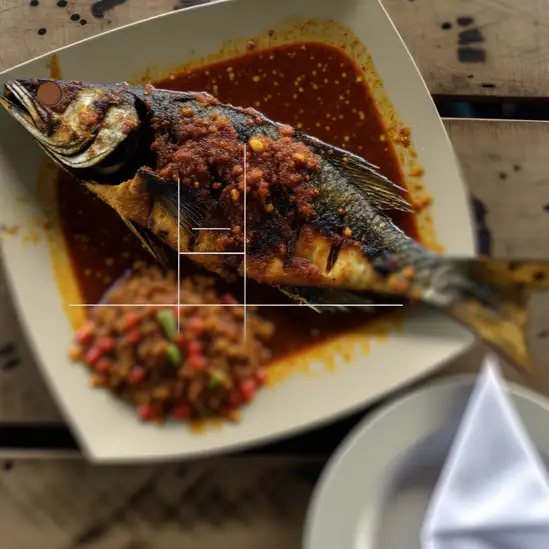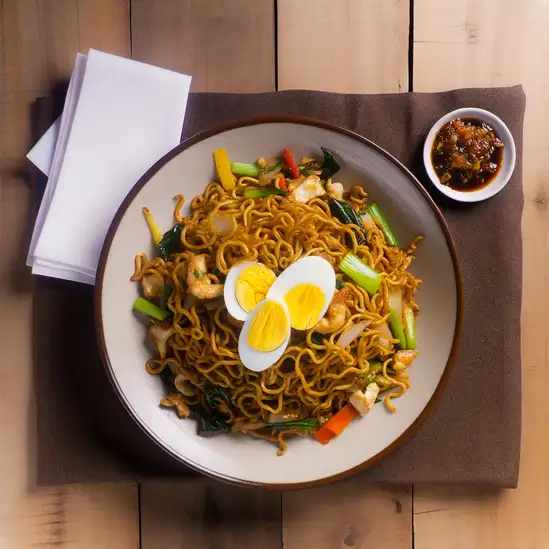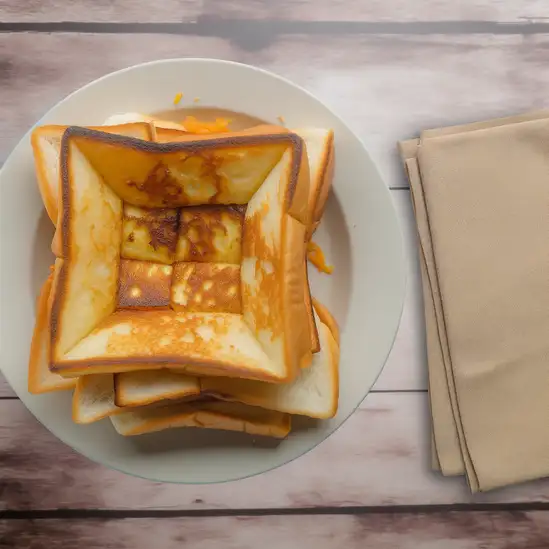


If you’re heading to Batam,get ready for a lively mix of island charm and bustling energy that feels both refreshingly laid-back and surprisingly vibrant. The moment you step off the ferry,there’s this warm,salty breeze that carries the scent of the sea and sizzling street food,instantly waking up your senses. Batam isn’t just a stopover; it’s a place where the hum of motorbikes blends with the chatter of locals and the clinking of seafood grills,creating a soundtrack that’s uniquely its own. What’s really special about Batam is how it balances its industrial roots with pockets of natural beauty. You can wander through lively markets where fresh tropical fruits burst with color and flavor,or find yourself on quiet beaches where the water shimmers under the sun,perfect for a lazy afternoon swim or a sunset stroll. The city’s character shines through in its food scene—imagine tasting freshly caught fish grilled right in front of you,paired with spicy sambal that tingles your tongue and makes you want more. Beyond the sensory delights,Batam’s warmth comes from its people. The locals are friendly and welcoming,always ready to share a smile or a story. Whether you’re exploring temples,hopping between islands,or just soaking in the vibrant street life,Batam feels like a place where you can slow down,breathe deeply,and soak up a slice of Indonesian island life that’s both familiar and refreshingly new.
The information on this page is currently being reviewed by Tripkliq and should be used as a guide only
Eng word: Hello
Eng pronunciation: Ha-lo
Local language: Halo
Eng word: Goodbye
Eng pronunciation: Se-la-mat ting-gal
Local language: Selamat tinggal
Eng word: Thank you
Eng pronunciation: Te-ri-ma ka-sih
Local language: Terima kasih
Eng word: How much
Eng pronunciation: Be-ra-pa
Local language: Berapa
Eng word: Toilet
Eng pronunciation: Toi-let
Local language: Toilet
Eng word: Help me
Eng pronunciation: To-long sa-ya
Local language: Tolong saya
Eng word: Yes
Eng pronunciation: Ya
Local language: Ya
Eng word: No
Eng pronunciation: Ti-dak
Local language: Tidak
Eng word: Excuse me
Eng pronunciation: Per-mi-si
Local language: Permisi
Batam was once a part of the Johor Sultanate before becoming a Dutch colony in the 17th century.
During World War II, Batam was occupied by the Japanese forces from 1942 to 1945.
After Indonesia gained independence in 1945, Batam became a part of the Riau Islands province.
In 1989, Batam was designated as a free trade zone to attract investment and promote economic growth.
Batam has since become a major industrial hub in Indonesia, attracting multinational companies and foreign investment.
In 2004, Batam was affected by the Indian Ocean tsunami, causing significant damage to the island.
Batam is a key transportation hub in the region, with a major seaport and an international airport.
In recent years, Batam has seen a boom in tourism development, with new resorts and attractions catering to both domestic and international visitors.
Due to its economic opportunities, Batam has experienced rapid population growth, with many migrants from other parts of Indonesia seeking employment in the island.
In Batam, the most common Power Adaptor is C, F.



Grilled fish marinated with a blend of spices, typically served with sambal (chili sauce) and rice.

Fried noodles stir-fried with vegetables, meat, and a mix of savory sauces, often garnished with fried shallots.

Toasted bread filled with various sweet or savory fillings, commonly enjoyed as a snack or breakfast.

Crab cooked in a spicy and tangy Padang sauce, often served with rice and a side of vegetables.

A traditional soup made with chicken or beef, flavored with spices and served with rice or noodles.

Village-style fried rice, often cooked with vegetables, chicken, and a hint of soy sauce, served with fried egg on top.

Fried tofu and tempeh, often served with a spicy sauce or as part of a larger meal.

Crispy crackers made from starch and various ingredients, often served as a side dish or snack.
Imagine stepping into a city where sleek skyscrapers meet lush greenery,and every corner hums with a vibrant energy that’s both modern and deeply rooted in tradition. That’s Singapore for you—a place where the air carries the fragrant mix of blooming orchids and sizzling street food,and the streets buzz with a blend of languages and laughter. Walking through neighborhoods like Chinatown or Little India,you’ll catch the rich aromas of spices mingling with the sweet scent of tropical fruits,inviting you to explore further.
What’s truly captivating about Singapore is how effortlessly it balances the fast-paced pulse of a global hub with pockets of serene beauty. You can be wandering through the futuristic Gardens by the Bay one moment,marveling at the towering Supertrees glowing softly at dusk,and the next,find yourself savoring a bowl of laksa or chili crab at a bustling hawker center,surrounded by locals chatting animatedly. The city’s character shines through its people—warm,diverse,and proud of their heritage,yet always welcoming.
There’s a rhythm here that’s both energizing and comforting. Whether you’re cycling along the waterfront,catching a sunset over Marina Bay Sands,or simply sipping kopi in a cozy café,Singapore invites you to slow down and soak in its unique blend of cultures,flavors,and sights. It’s a city that surprises you with its layers,making every visit feel like a new discovery.
Johor Bahru has this lively,welcoming energy that instantly makes you feel like you’ve stepped into a place where tradition and modern life dance together effortlessly. As you wander through its bustling streets,you’ll catch the rich aroma of spices and grilled satay wafting from street stalls,mingling with the faint scent of tropical flowers from nearby gardens. The city hums with a mix of chatter in Malay,Mandarin,and Tamil,creating a vibrant soundtrack that’s both familiar and excitingly new.
What’s really special about Johor Bahru is how it wears its history with pride while embracing the future. You can explore colorful temples and colonial buildings that tell stories of the past,then hop over to sleek malls or quirky cafes where young locals sip kopi and share laughs. The city’s character shines brightest in its food—imagine biting into a crispy roti canai,the flaky layers melting in your mouth,or savoring fresh seafood caught just off the coast,bursting with flavor.
There’s a warmth in the people here that’s hard to forget. Whether you’re bargaining at the lively markets or chatting with a friendly vendor,you’ll feel a genuine kindness that makes the city feel like a second home. Johor Bahru isn’t just a stopover; it’s a place that invites you to slow down,soak in the colors,sounds,and tastes,and leave with stories you’ll want to tell again and again.
Kuala Lumpur feels like a vibrant heartbeat pulsing through the heart of Malaysia—where tradition and modernity dance effortlessly together. The moment you step into the city,you’re greeted by the towering silhouettes of the Petronas Twin Towers piercing the sky,their glass facades shimmering against the tropical sun. But it’s not just the skyline that captivates you; it’s the lively street scenes below. The air buzzes with the chatter of street vendors,the sizzle of satay grilling over open flames,and the sweet aroma of pandan and lemongrass wafting from bustling food stalls.
Walking through neighborhoods like Bukit Bintang or Chinatown,you’ll find a kaleidoscope of colors and sounds—vibrant markets brimming with spices,textiles,and handcrafted trinkets,while the calls to prayer from nearby mosques blend harmoniously with the hum of city life. The city’s rich cultural tapestry is woven from Malay,Chinese,and Indian influences,creating a unique blend you can taste in every bite of nasi lemak or teh tarik.
What I love most is how Kuala Lumpur never feels rushed. Whether you’re sipping kopi at a roadside stall or wandering through the lush greenery of the KL Forest Eco Park,there’s a warm,welcoming energy that invites you to slow down and soak it all in. It’s a city that surprises you at every turn—full of contrasts,flavors,and stories waiting to be discovered.
If you find yourself wandering through Kota Administrasi Jakarta Pusat,you’ll immediately notice the pulse of a city that’s both historic and buzzing with modern energy. It’s a place where colonial-era buildings stand shoulder to shoulder with sleek skyscrapers,creating a fascinating blend of old and new. Walking down the streets,you can almost hear the echoes of history mingling with the chatter of office workers and street vendors. The air carries a mix of aromas—from the rich,spicy scent of street food stalls grilling satay to the faint,comforting smell of freshly brewed kopi from tiny warungs tucked in corners.
What really makes Jakarta Pusat special is its vibrant character. It’s the heart of the city’s administrative and cultural life,so you’ll find a lively mix of people—government officials,artists,students,and families—all weaving their stories into the urban fabric. The bustling markets,like Pasar Baru,invite you to haggle over colorful textiles and local snacks,while nearby museums and galleries offer a quiet retreat into Indonesia’s rich heritage.
There’s a rhythm here that’s both fast-paced and inviting. Whether you’re sipping a sweet es cendol under the shade of a tree in Merdeka Square or catching the golden light reflecting off the National Monument at dusk,Jakarta Pusat feels alive in a way that’s deeply human and endlessly fascinating. It’s a city that invites you to slow down,look around,and soak in the layers of life unfolding all at once.
Denpasar has this vibrant,lived-in energy that instantly pulls you in. It’s not the polished tourist hub you might expect from Bali,but rather the bustling heart where locals go about their daily lives with warmth and rhythm. Walking through its streets,you’ll hear the hum of motorbikes weaving through traffic,the chatter of market vendors calling out fresh produce,and the occasional clang of temple bells weaving into the city’s soundtrack. The air carries a mix of fragrant spices,sizzling street food,and the earthy scent of incense from nearby shrines.
What I love most about Denpasar is how it feels like a genuine slice of Balinese culture. The city pulses with tradition—colorful ceremonies unfold in the temples,and you’ll spot locals dressed in sarongs,carrying offerings with quiet reverence. At the same time,there’s a youthful buzz in the cafes and art spaces,where creativity bubbles alongside age-old customs. It’s a place where you can savor a plate of spicy babi guling from a humble warung,then wander through the art markets filled with intricate wood carvings and vibrant paintings.
Denpasar invites you to slow down and soak in the everyday magic—the warmth of the people,the rich smells,and the lively streets. It’s a city that doesn’t shout for attention but rewards those who take the time to explore its layers. If you want to experience Bali beyond the beaches,Denpasar offers a genuine,colorful glimpse into the island’s soul.
Imagine stepping into a place where the air hums with the gentle rhythm of waves lapping against sun-warmed shores,and the scent of salty sea mingles with fragrant street food stalls. That’s Phuket for you—a vibrant island that feels alive in every sense. It’s not just the stunning beaches that grab you,but the way the island pulses with a laid-back energy,where colorful markets buzz with chatter and the aroma of grilled seafood fills the air. Walking through the old town,you’ll find charming Sino-Portuguese buildings painted in pastel hues,their shutters creaking softly in the tropical breeze,while tuk-tuks zip by,adding a playful soundtrack to your explorations.
Phuket’s character is a beautiful blend of tradition and liveliness. Temples with golden spires peek out from lush greenery,inviting quiet moments of reflection,while nearby,night markets burst with life—vendors calling out,sizzling woks,and the sweet tang of mango sticky rice tempting your taste buds. The island’s culture is warm and welcoming,with locals who smile easily and share stories over cups of strong Thai coffee or fresh coconut water.
What makes Phuket truly special is how it wraps you in its embrace—whether you’re watching a fiery sunset from a cliffside bar,diving into crystal-clear waters teeming with vibrant marine life,or simply savoring the spicy kick of a freshly made curry. It’s a place that invites you to slow down,soak in the colors,sounds,and flavors,and leave with a heart full of unforgettable moments.
Money changers may use deceptive practices, such as hidden fees or incorrect exchange rates, to shortchange tourists.
Scammers may sell fake ferry tickets to tourists, particularly near ferry terminals, leaving them stranded or forced to buy new tickets.
Shops or markets may sell counterfeit branded goods at high prices, claiming they are authentic.
Some massage parlors may advertise low prices but add hidden charges or pressure tourists into paying for additional services.
Tourists renting motorbikes may be accused of causing pre-existing damage and forced to pay hefty repair fees.
Crowded areas like markets, malls, and ferry terminals are hotspots for pickpockets targeting tourists.
Street vendors may charge tourists significantly higher prices for food, souvenirs, or other items compared to locals.
Some taxi drivers may refuse to use the meter and charge tourists inflated fares, especially from the ferry terminal or airport.
Tourists may be lured into attending high-pressure sales presentations for timeshares or fake investment opportunities.
Unlicensed operators may sell fake or substandard tour packages, promising attractions or services that are not delivered.
Indonesia has very strict drug laws, and Batam is no exception. The possession, use, or trafficking of illegal drugs can result in severe penalties, including long prison sentences and even the death penalty. Tourists should avoid any involvement with illegal drugs and be aware that even small quantities can lead to serious legal consequences.
In Batam, Indonesia, smoking is generally allowed in public places, but there are restrictions. Smoking is prohibited in certain areas such as government buildings, healthcare facilities, educational institutions, and public transportation. Many restaurants and cafes have designated smoking areas. Tourists should look for 'No Smoking' signs and adhere to local regulations to avoid fines.
Vaping in Batam is subject to similar regulations as smoking. It is generally allowed in public places but is prohibited in areas where smoking is banned, such as government buildings, healthcare facilities, and public transportation. Tourists should be mindful of 'No Vaping' signs and respect local rules to avoid penalties.
What are other people saying about Batam?
Recent Social posts about Batam
There is nothing to show you for now.